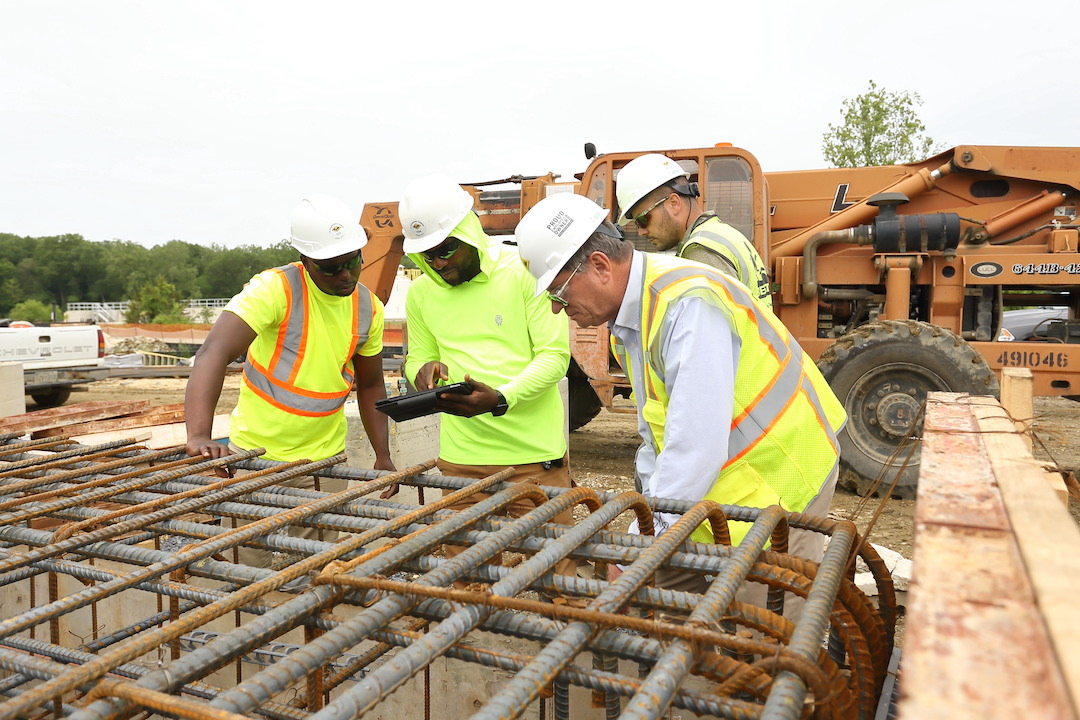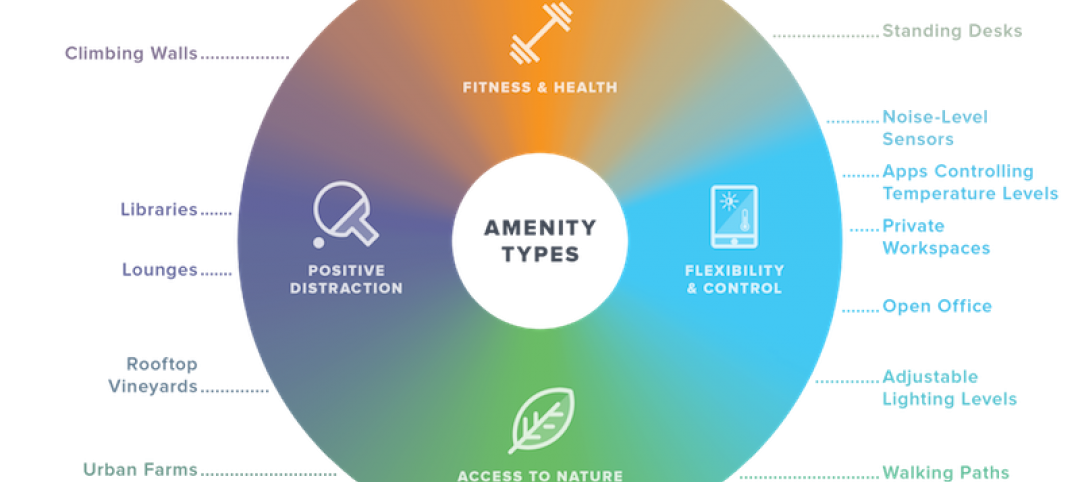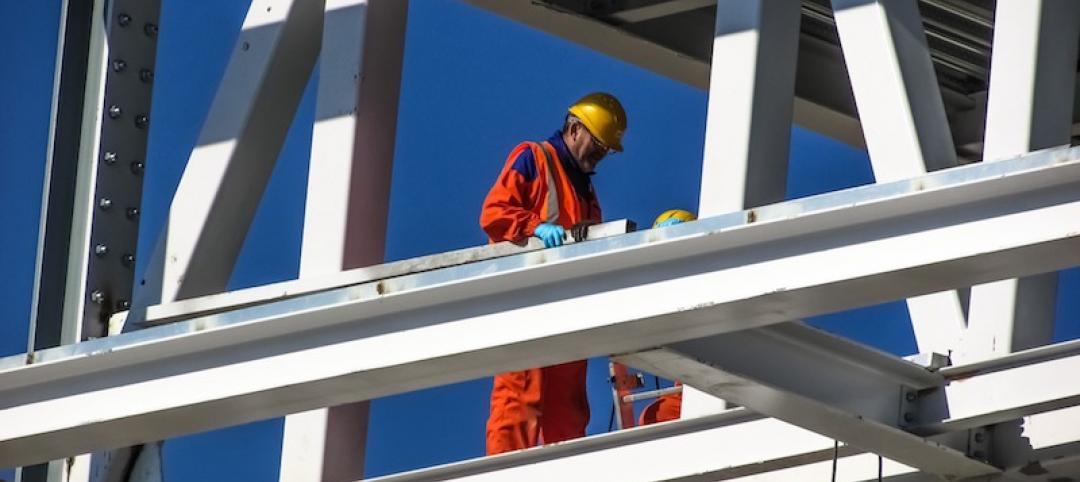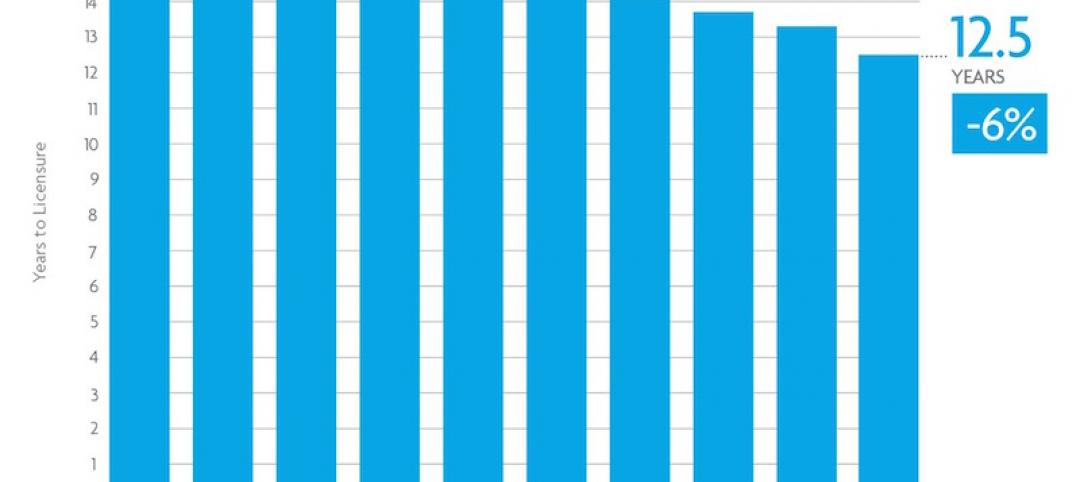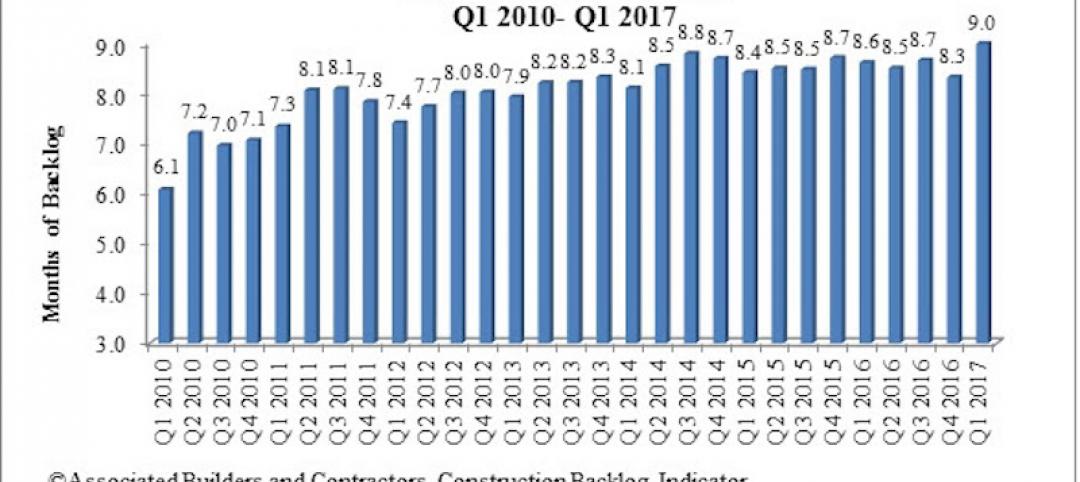Only 14 states and the District of Columbia have added construction jobs since just before the start of the pandemic in February 2020, according to a new analysis of federal employment data released today by the Associated General Contractors of America. Association officials noted that widespread supply chain disruptions amid and the lack of a much-needed federal infrastructure bill have impeded the sector’s recovery.
“Construction employment remains below pre-pandemic levels in more than two-thirds of the states,” said Ken Simonson, the association’s chief economist. “Supply problems have slowed down many projects and forced contractors to hold down employment, while the lack of an infrastructure bill is leading some to delay hiring.”
From February 2020—the month before the pandemic caused project shutdowns and cancellations—to last month, construction employment increased in only 14 states and D.C., decreased in 35 states, and stalled in Connecticut. Texas shed the most construction jobs over the period (-48,000 jobs or -6.1%), followed by New York (-47,300 jobs, -11.6%) and California (-32,600 jobs, -3.6%). The largest percentage losses were in Louisiana (-16.1%, -22,000 jobs), Wyoming (-15.7%, -3,600 jobs) and New York.
Utah added the most construction jobs since February 2020 (9,400 jobs, 8.2%), followed by Washington (6,300 jobs, 2.8%), North Carolina (5,300 jobs, 2.2%), and Idaho (5,100 jobs, 9.3%). The largest percentage gains were in Idaho, Utah, and South Dakota (7.9%, 1,900 jobs).
From August to September construction employment decreased in 16 states, increased in 32 states and D.C., and was unchanged in Iowa and Kansas. The largest decline over the month occurred in Tennessee, which lost 2,800 construction jobs or 2.1%, followed by Missouri (-1,600 jobs, -1.3%). The largest percentage decline was in Alaska (-800 jobs, -4.9%), followed by Tennessee and Montana (-400 jobs, -1.4%).
Texas added the most construction jobs between August and September (8,900 jobs, 1.2%), followed by Florida (6,900 jobs, 1.2%) and Washington (3,600 jobs, 1.6%). Connecticut had the largest percentage gain (3.0%, 1,700 jobs), followed by Delaware (2.9%, 700 jobs) and West Virginia (2.3%, 700 jobs).
Association officials continued to urge the Biden administration to remove tariffs on a host of key construction materials, including steel and aluminum, and to do more to relieve shipping bottlenecks that are crippling many parts of the distribution network. They also urged House officials to quickly pass a Senate-backed infrastructure bill to increase investments in the nation’s transportation and water systems.
“The latest state employment figures show that gridlock in our ports and on Capitol Hill is retarding construction employment as well as the broader economy,” said Stephen E. Sandherr, the association’s chief executive officer. “Even as the administration looks for ways to unclog domestic supply chains, the President should urge the House to pass the infrastructure bill, on its own, as quickly as possible.”
View state February 2020-September 2021 data and rankings, 1-month rankings.
Related Stories
Market Data | Aug 2, 2017
Nonresidential Construction Spending falls in June, driven by public sector
June’s weak construction spending report can be largely attributed to the public sector.
Market Data | Jul 31, 2017
U.S. economic growth accelerates in second quarter; Nonresidential fixed investment maintains momentum
Nonresidential fixed investment, a category of GDP embodying nonresidential construction activity, expanded at a 5.2% seasonally adjusted annual rate.
Multifamily Housing | Jul 27, 2017
Apartment market index: Business conditions soften, but still solid
Despite some softness at the high end of the apartment market, demand for apartments will continue to be substantial for years to come, according to the National Multifamily Housing Council.
Market Data | Jul 25, 2017
What's your employer value proposition?
Hiring and retaining talent is one of the top challenges faced by most professional services firms.
Market Data | Jul 25, 2017
Moderating economic growth triggers construction forecast downgrade for 2017 and 2018
Prospects for the construction industry have weakened with developments over the first half of the year.
Industry Research | Jul 6, 2017
The four types of strategic real estate amenities
From swimming pools to pirate ships, amenities (even crazy ones) aren’t just perks, but assets to enhance performance.
Market Data | Jun 29, 2017
Silicon Valley, Long Island among the priciest places for office fitouts
Coming out on top as the most expensive market to build out an office is Silicon Valley, Calif., with an out-of-pocket cost of $199.22.
Market Data | Jun 26, 2017
Construction disputes were slightly less contentious last year
But poorly written and administered contracts are still problems, says latest Arcadis report.
Industry Research | Jun 26, 2017
Time to earn an architecture license continues to drop
This trend is driven by candidates completing the experience and examination programs concurrently and more quickly.
Industry Research | Jun 22, 2017
ABC's Construction Backlog Indicator rebounds in 2017
The first quarter showed gains in all categories.


